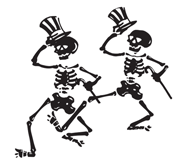Week of March 31, 1997
This week's show features a 1996 live performance by the David Murray Octet with guests Bob Weir and Phil Lesh.
A bay area native, Murray was a founder of the World Saxophone Quartet and has recorded and performed in a zillion configurations and contexts. He worked with Bob Weir, Taj Mahal, and others on a stage musical about the life of baseball legend Satchel Paige that so far hasn't seen the light of day. Murray sat in with the Grateful Dead, playing tenor sax and bass clarinet, at Madison Square Garden on September 22, 1993, and again at the Oakland Coliseum on February 26, 1995. He played with the Jerry Garcia Band at MSG on November 12, 1993. In 1996, Murray released an album titled Dark Star - The Music of the Grateful Dead. I was asked to contribute liner notes (from the "Dead" perspective; Howard Mandel provided a jazz scholar's take); an excerpt:
The Dead was a player’s band and a composer’s band. Given their long-term commitment to real-time inventiveness, they had to come up with songs that could keep their own interest as well as that of their fiercely attentive audience while remaining open enough to permit excursions into the unknown and ungoverned. This is a band that loved to jam and took composition seriously, and neither aspect of their creativity took a back seat to the other.Their philosophy of performance allowed every player to invent his part anew at any time, and melodic and rhythmic interest could come from everywhere. David Crosby calls it “electronic Dixieland”: everybody has lots of room to blow and everybody invents at once. By being good listeners as well as good players, they were able to create spontaneous musical structures of impressive complexity - and then either truck on into another song or just blow everything away and start something new without a look behind.
So for a guy like David Murray, himself a force of nature with a tremendously diverse palette – just look how many configurations he works with on a regular basis – crossing paths with the Grateful Dead is a glorious opportunity for two (somewhat overlapping) audiences to deepen the discourse and turn each other on.
Murray is collaborating with Grateful Dead guitarist Bob Weir on a stage musical that follows the parallel tracks of jazz musicians and black baseball players through the 20th Century by telling the story of the legendary pitcher Satchel Paige. It was inevitable, and most welcome, that Murray would sit in with the Dead, and it happened at Madison Square Garden September 22, 1993. Blues harp legend James Cotton was onstage that night, too.
The Dead were using an earpiece monitor system that allowed the musicians to speak directly to each other while the music was playing, so Murray got plenty of cues from guitarists Bob Weir and Jerry Garcia and bassist Phil Lesh. “They laid it out for me like a blanket,” Murray recalls. “They opened it up for me and gave me all the room I wanted.”
Not only was the Dead’s audience the largest Murray has ever appeared before, but they were also the most attentive and responsive. “When I played a solo, I could see bodies moving with my saxophone. They were with every note. It was phenomenal, and I loved it.”
The evening – and the music, and the musicians – made a deep impression on David Murray, and this record is the happy result.
In preparing for these sessions, Murray studied several dozen songs from the Dead’s hundred-plus-title working repertoire, mindful of the needs of the music and always conscious of the line between jazz and rock’n’roll. “I picked tunes that were intrinsically and esthetically comfortable for me to play in a jazz format,” he explains. By studying a number of different performances of a given tune, Murray has been able to distill the spirit of the Dead’s music, integrate some specific melodic notions that were transitory in the continuous flow of Dead music but well worth the attention they get here, and – as important as anything that happens in an endeavor such as this – preserve the fun that lies at the heart of this music.
(And a personal note: Murray sat in with my band, then called Crazy Fingers, at Sweetwater in Mill Valley on January 30, 1994. I found myself standing onstage between Murray and guitarist Henry Kaiser, trying to find my way into a roaring torrent of sound. It was a peak experience for me! Bob Weir also sat in that night, but I wasn't on stage with him.)
Enjoy!
The music:
David Murray Octet 3/6/97 Fillmore Auditorium, San Francisco
DARK STAR with Phil Lesh and Bob Weir
CHINA DOLL with Bob Weir
SHAKEDOWN STREET with Bob Weir
Every Wednesday, we post a program from the Grateful Dead Hour archives for your enjoyment and enlightenment. You can browse or search the playlists at gdhour.com or on the GD Hour Search page, and let me know what program(s) you'd like to hear by emailing me at gdhour@dead.net.
Thank you for listening!
- David Gans




